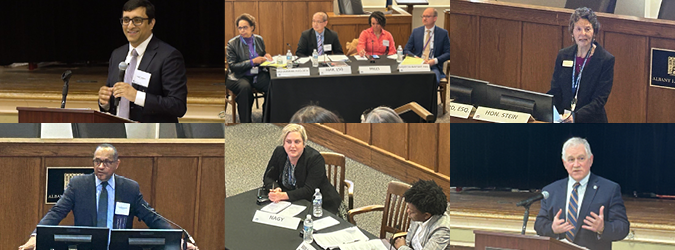How New Federal Law Protecting Patients From Surprise Bills Works With NY Law
1.18.2022
The federal No Surprises Act took effect Jan. 1, protecting patients nationwide from being hit by surprise medical bills when they are unexpectedly treated by a health care provider outside their insurance network.
In New York State, a similar law has been in effect since 2015. Figuring out how the state and federal regulations will work together to protect consumers was the topic of a panel discussion Tuesday at the New York State Bar Association’s Annual Meeting.
“New York had extensive existing protections,” said Harold N. Iselin of Greenberg Traurig in Albany, counsel to the New York Health Plan Association, which represents managed care plans and prepaid health service plans. “In many ways, our law in New York was a model for some of the federal provisions.”
But there are some differences, Iselin said. When the laws disagree, the standard that prevails is the law that gives more protection to the consumer, he said. “In analyzing the law and the overlap between the state law and the federal law, it’s most helpful if you put yourself in the shoes of the consumer and think, ‘What benefits me the most?’ That will generally take you to the right result,” Iselin said.
For example, the federal law does not offer protection against surprise charges related to an ambulance ride on the ground, but New York’s law does, so the New York rules apply. (On the other hand, New York had no protections related to air ambulances, but the federal law does, so the federal law will apply in those cases.)
And New York law only covered surprise bills from doctors and hospitals. The new federal law covers such bills from all health care providers, so that protection will now apply in New York.
Another difference: New York’s law said that pregnant patients could continue with the same health care provider if the provider left the health plan in the patient’s second trimester or later. Federal law extends this protection to the entire pregnancy.
One of the challenges of the No Surprises Act is calculating how much insurers should compensate out-of-network health care providers, now that patients won’t be required to pay more than the in-network rates.
“There has been considerable legislative and policy debate on how to determine the amounts that plans should pay to compensate [out-of-network] providers,” said Robin Gelburd, president of FAIR Health, a not-for-profit that provides data on medical costs nationwide. Gelburd also spoke on Tuesday’s panel.
Under the No Surprises Act, if insurers and providers cannot agree on a reimbursement amount, they can turn to an independent arbitrator to determine the payment. The arbitrator is expected to take into consideration the in-network median rates in a geographic area.
The American Medical Association, American Hospital Association, and several other organizations have sued the federal government, saying the arbitration process favors health insurance companies.
FAIR recently announced a new product in response to the No Surprises Act, FH NSA Reference File, that provides data on median in-network rates. FAIR has collected information on more than 35 billion private medical claims over the past two decades, and its pricing data is already used as a benchmark by five states, including New York, that have surprise billing laws, Gelburd said.
The No Surprises Act is considered a major victory for consumers. The surprise bills would sometimes arise out of medical emergencies, even at in-network hospitals, where the patients were unexpectedly treated by out-of-network specialists. According to the Kaiser Family Foundation, about one in five emergency room visits resulted in a surprise bill.






